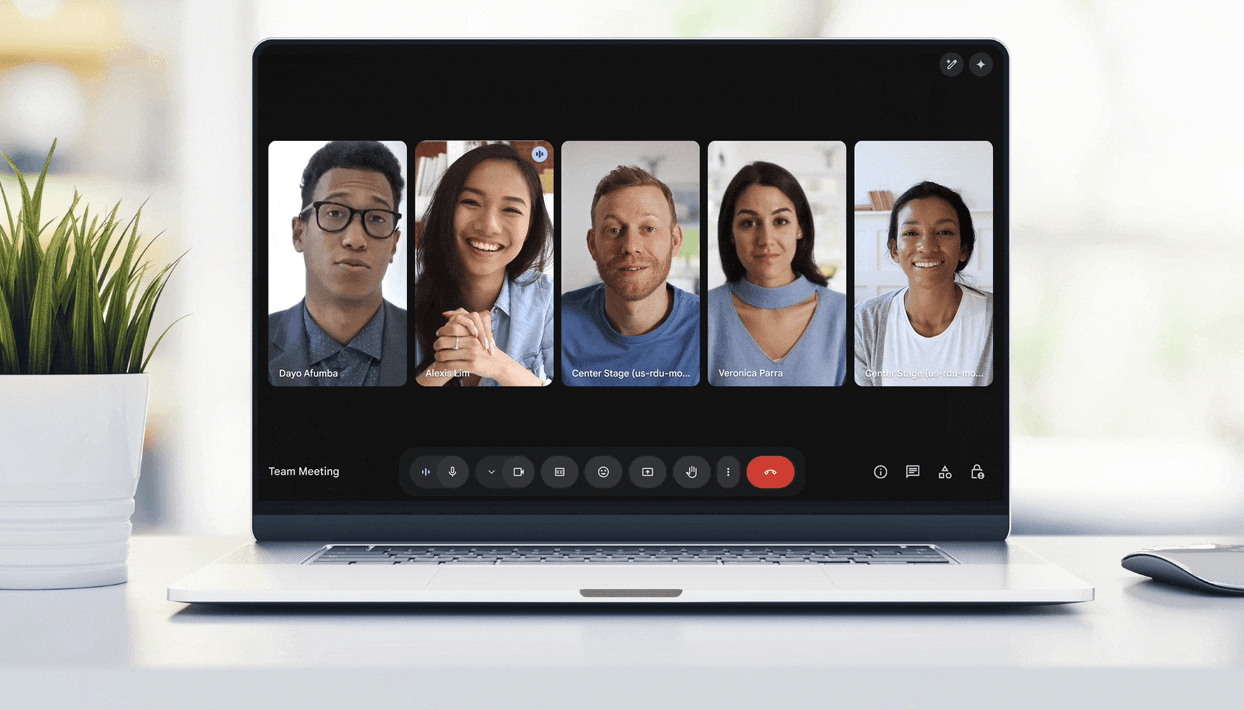
Google Meet is set to receive a major upgrade designed to make video conferencing feel more natural and engaging, due to its new AI-driven ‘Dynamic Layouts’. The latest update aims to reduce distractions, optimise screen space, and improve participant visibility – particularly for hybrid work environments. The ‘Dynamic Layouts’ use AI to crop backgrounds, highlight speakers, and arrange video tiles in a way that makes virtual meetings feel more immersive.
The new Portrait Tiles feature, for example, ensures each participant’s face remains the focal point by eliminating unnecessary background space. For users who join meetings with their cameras off, Google Meet will now introduce colour-sampled name tiles, making it easier to distinguish participants. Additionally, the platform will now allow up to six tiles to be pinned at once – double the previous limit.

One of the standout features of the update is Dynamic Tiles, designed for meeting rooms equipped with Google Meet hardware. This feature creates individual video tiles for up to three in-room participants, ensuring each person is clearly visible. The system also uses AI-powered speaker detection, which automatically highlights the active speaker without requiring additional hardware.
To further improve user experience, Google Meet is rolling out a Face Match feature, which allows participants using Companion Mode to label themselves. This makes it easier to identify individuals in hybrid meetings, reducing confusion when multiple people join from the same conference room setup. The update will begin rolling out to Google Workspace customers and personal account holders starting March 31.
Those on rapid-release domains can expect to see the changes within the next 15 days, while scheduled-release domains will receive the update from April 17 onwards, with full deployment expected by May..














